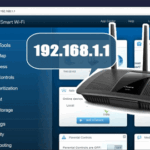Introduction The actual meaning of the granular recovery technology is the process of using technology to ‘pull out’ data at the grain level from electronic devices such as computer hard drives, SSD drives, cellphones, flash drives, CD’s and other digital storage media. Granular recovery enables the recovery of specific documents, mails, photos; emails;; personal documents … [Read more...] about Granular recovery technology (What does mean this Technology)
Deep offshore technology
Introduction Offshore drilling has otherwise made it possible for the exploration of oil and gas from water areas and up to a depth of 500 meters. Nevertheless, new reserves are more challenging to find onshore and in shallow waters so companies are willing to expand oltechnology and go deeper into ultra-deep water. As for the particularities of drilling and production, the … [Read more...] about Deep offshore technology
How to linksys router login
Introduction Wireless router is another product that has its king and one of those kings is Linksys. Linksys routers have the capability to provide and manage connections so that many devices can connect to the internet at once. But if you wish to go deeper in the options of your Linksys Wi-Fi, or change the way it is controlled, then you will need to access the Linksys … [Read more...] about How to linksys router login
Chinadivision Logistics Fulfillment Plugin (Guide to Using)
Choosing and making orders on international logistics and assuring that the exact stock is shipped timely amongst various digital storefronts and warehouses can be a difficult task for b2b sellers.The Chinadivision Logistics Fulfillment Plugin solves these issues by making order data sync seamless. This guide will walk you through using the Chinadivision plugin to streamline … [Read more...] about Chinadivision Logistics Fulfillment Plugin (Guide to Using)
Facilities that use cutting edge medical technology
Introduction Development in science and technology has in one way or the other impacted the medical field in wonderful manners. The healthcare facilities are keener on embracing new trends in the health sector in healthcare technologies with frequent innovations. This makes it possible for them to provide sustainable results in the management of their clients. In this … [Read more...] about Facilities that use cutting edge medical technology





